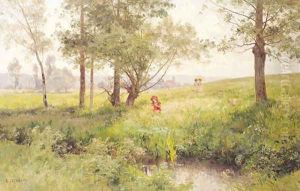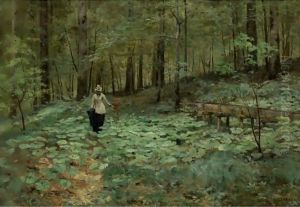Emile Isenbart Paintings
Émile Isenbart was a French landscape painter, born on December 21, 1846, in Besançon, France. He was known for his naturalistic depiction of landscapes, often capturing the rural countryside of France with a focus on light and atmosphere. Isenbart was part of the Barbizon school, a group of artists who worked in the Barbizon region of France and aimed to depict nature with a sense of directness and sincerity, often painting en plein air (outdoors).
Isenbart received his artistic training at the École des Beaux-Arts in Besançon and later in Paris. His career was marked by his passion for capturing the changing effects of light on the landscape, akin to the impressionist painters who were his contemporaries. However, Isenbart's style remained distinct, and he did not fully adopt the Impressionist technique or their brighter palette.
Throughout his career, Isenbart exhibited his works at various salons and received recognition for his contribution to French art. His works can be characterized by their tranquil beauty, often portraying the calmness of rivers, the lushness of forests, and the serenity of rural vistas. He had a particular affinity for water scenes, notably rivers and coasts, which he rendered with a delicate sense of the interplay between light and water.
Émile Isenbart died on September 26, 1921, in Besançon. His artwork remains a testament to the 19th-century French landscape tradition and can be found in several museum collections across France. Isenbart’s legacy is that of a dedicated landscape artist who sought to capture the essence of the French countryside through his gentle and atmospheric paintings.

